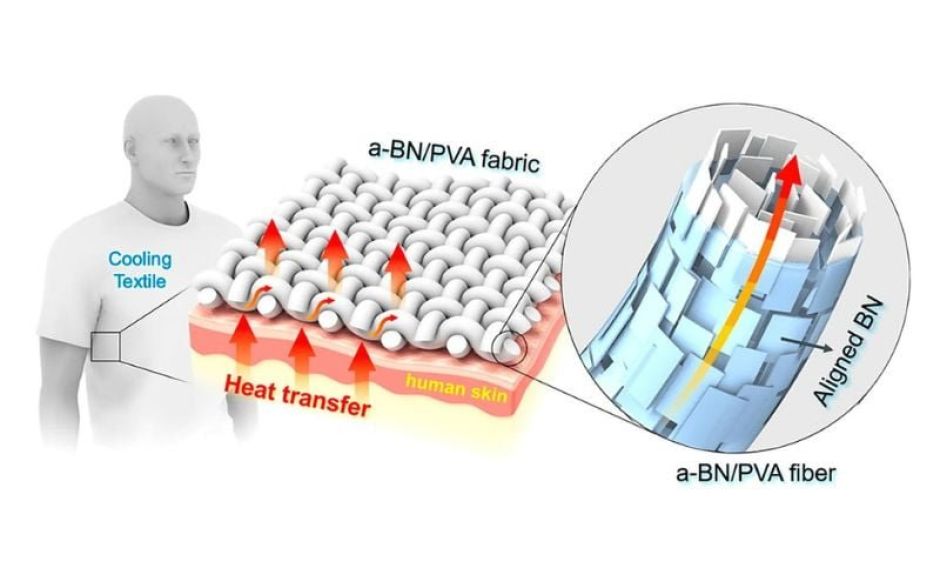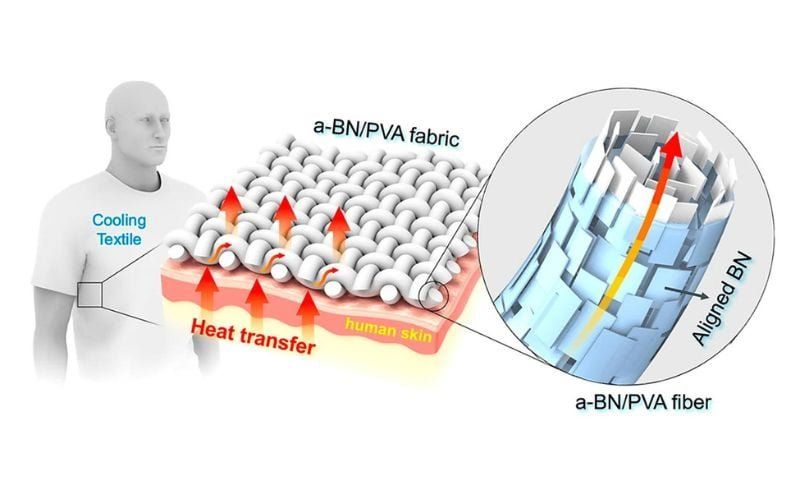
Thermal Wear : The Unsung Hero of Extreme Super Environments 2023
Thermal Wear – When it comes to withstanding extreme temperatures, many people turn their attention to the outer layers, forgetting the paramount importance of what lies beneath. Thermal-wear (outdoor thermal wear), often relegated to the background, is the true linchpin that can make or break your experience in harsh climates. This unsung hero of the clothing world offers not just warmth but a range of features designed to make extreme environments more bearable. Let’s dive into the multifaceted world of thermal wear, unraveling its importance, the technology that drives it, and how to choose the best fit for your needs.

Table of Contents
The Core Principles of Thermal Wear
Thermal-wear, at its essence, operates on a simple principle: insulation. But understanding this is just scratching the surface. The primary function is to trap body heat, creating a warm layer close to the skin, but there’s more to it than mere insulation.
- Moisture Management: Good thermal-wear is adept at wicking away sweat. Moisture, when trapped, can lower body temperature, making the cold more biting. Materials like merino wool excel in this, keeping the wearer dry and comfortable.
- Breathability: It’s not just about keeping the warmth in. Thermal wear must also allow the body to breathe, ensuring that there’s no overheating, especially during physical activities.
- Flexibility and Comfort: From skiing to mountaineering, the best thermal wear offers flexibility, allowing a full range of motion without any restrictions.

Material Matters: Crafting the Ideal Thermal Wear
Different materials offer various benefits and drawbacks when it comes to thermal wear. Here’s a breakdown of the most popular materials:
- Merino Wool: A top contender in the thermal wear category. It offers excellent insulation, moisture-wicking properties, and is naturally odor-resistant. Additionally, it’s soft against the skin, minimizing the chances of irritation.
- Synthetics (Polyester, Nylon): Lightweight and quick-drying, synthetic materials are often blended to enhance moisture-wicking capabilities. They’re generally more durable than natural fibers and often come with a more accessible price point.
- Silk: A luxurious option, silk offers a smooth, lightweight feel. While it’s not as insulating as wool, it’s an excellent choice for milder conditions or as a base layer under heavier garments.
- Cotton: Generally avoided in high-performance thermal wear. Cotton retains moisture, which can be a detriment in cold conditions. However, for more relaxed settings or mild cold, cotton can be comfortable.

Fit and Function: Tailoring Your Thermal Experience
The intricate balance between fit and function in thermal wear cannot be overstated. These elements converge to determine the overall effectiveness and comfort of your chosen apparel, especially when confronted with extreme temperatures. While thermal wear’s primary role is insulation, the manner in which it hugs your body can enhance or detract from its performance. Here’s a deeper dive into understanding the nuances:
- Snug but Non-restrictive: Thermal wear operates optimally when it maintains a close relationship with the skin. This proximity allows it to trap body heat effectively. However, it’s crucial to differentiate between snug and tight. Overly tight thermals can impede blood circulation, which is counterproductive as good circulation is essential for maintaining body warmth.
- Layering Considerations: Thermal wear often forms the base layer in a multi-layered ensemble designed for cold environments. The fit must be such that it can comfortably accommodate subsequent layers without causing bunching or discomfort. Furthermore, a well-fitted base layer ensures smoother moisture wicking, preventing dampness from sweat, which can drastically reduce insulative properties.
- Activity-specific Design: The fit and function also vary based on the activity you’re engaging in. For instance, mountaineers might prefer thermal wear with reinforced patches at high-wear areas, while those into winter sports might opt for ones with higher elasticity to accommodate swift movements.
- Ergonomic Features: High-quality thermal wear brands invest in ergonomic designs. Features such as flat seams prevent chafing, especially during prolonged wear. Similarly, strategically placed ventilation zones cater to areas that tend to overheat, ensuring optimal temperature regulation.
- Personal Comfort: Beyond the technical aspects, personal comfort plays a significant role. Some individuals might prefer a compression fit for its muscle support benefits, especially during strenuous activities. Others might lean towards a relaxed fit, prioritizing comfort over all else. Knowing one’s preferences and understanding the implications of each choice is paramount.
In the world of thermal wear, the phrase “one size fits all” is a misnomer. Each individual’s needs, combined with the intended activity, environment, and personal preferences, dictate the ideal fit. By investing time in comprehending these intricacies, one can truly unlock the unparalleled comfort and performance that premium thermal wear promises.
Thermal Wear in Modern Times: Tech and Trends
The evolution of thermal wear has transcended its foundational purpose of warmth, aligning with contemporary technological advancements and modern fashion sensibilities. As the world grows increasingly interconnected, and as outdoor pursuits become more refined, the demands placed on thermal wear have expanded. Today, it’s not just about combating the cold; it’s about doing so with panache, efficiency, and tailored precision. Let’s dive into the pivotal tech integrations and trends shaping the future of thermal wear.
- Smart Fabric Technologies: Leading the charge are smart fabrics, which boast the ability to react and adapt to changes in the environment. These materials can increase insulation when it’s cold and enhance breathability during warmer moments or periods of high exertion. Through microscopic polymer chains or embedded sensors, they read the environment and respond in real-time, delivering a dynamic thermal experience.
- Eco-conscious Materials: In line with the global push towards sustainability, many brands are crafting thermal wear using recycled materials. Whether it’s polyester derived from post-consumer plastic bottles or natural fibers sourced sustainably, eco-conscious thermals are reducing the industry’s carbon footprint without compromising on performance.
- Aesthetic Evolution: Gone are the days when thermal wear was hidden beneath layers, only to be seen in the confines of one’s abode. Today’s thermals come in a plethora of designs, patterns, and cuts, suitable for standalone wear. The intersection of fashion and function has broadened the appeal of thermal wear, making it a staple even in urban wardrobes.
- Enhanced Durability: With advancements in fabric weaving techniques and the introduction of robust materials, modern thermal wear is designed to resist wear and tear. Reinforced stitch patterns, anti-pilling surfaces, and resistance to frequent washing cycles are now standard features, ensuring longevity.
- Innovative Construction Techniques: Modern thermal wear often employs techniques like body-mapping. This method involves placing varying levels of insulation at different parts of the garment, based on where the body needs it the most. Such precision ensures optimal warmth without the bulk.
- Integration with Wearable Tech: Some of the most avant-garde thermal wear now comes equipped with in-built tech features. This includes heated panels powered by rechargeable batteries, or even connectivity with smart devices to regulate the garment’s temperature using an app.
The realm of thermal wear, once considered rudimentary, is undergoing a renaissance. By intertwining technology and trend-forward designs, it ensures that consumers no longer have to choose between staying warm and staying stylish. As these innovations continue to emerge and mature, thermal wear’s position in the pantheon of essential wearables is only set to solidify.
Care and Maintenance: Prolonging the Life of Your Thermal Wear
When you invest in quality thermal wear, ensuring its longevity becomes paramount. As with many high-performance garments, the life span of thermal wear hinges on the care and attention you give it. Maintaining these pieces isn’t merely about cleanliness; it’s about preserving their thermal properties, structural integrity, and aesthetic appeal. Below is a comprehensive guide to ensure your thermals stay as efficient and pristine as the day you bought them.
- Understanding Fabric Needs: Before diving into any care routine, familiarize yourself with the specific fabric of your thermal wear. Be it synthetic, natural, or a blend, each material will have its own set of care instructions. Often, these details are provided on the garment’s label. Adherence to these instructions is not just recommended; it’s crucial.
- Gentle Cleaning: While it might seem tempting to throw your thermals in with a regular laundry load, they benefit from a gentler touch. Use cold water settings and mild detergents to prevent the fabric’s breakdown. Also, avoid bleach or fabric softeners, as they can compromise the garment’s thermal properties and elasticity.
- Air Drying over Machine Drying: High heat can be the nemesis of thermal wear. It can cause shrinking, warping, or even a breakdown of integrated technologies. Whenever possible, opt for air drying your thermals. If you must use a dryer, ensure it’s on a low heat setting.
- Storage Considerations: Storing your thermal wear in a cool, dry place helps in preserving its qualities. Avoid areas with direct sunlight or high humidity, as prolonged exposure can deteriorate the fabric. For thermals not in regular use, especially during off-seasons, consider breathable storage bags.
- Mending Small Damages: Over time and with frequent use, minor damages like small holes or loose threads might appear. Address these issues promptly to prevent them from escalating. Simple sewing fixes can extend the life of the garment significantly.
- Avoiding Harsh Chemicals: Certain activities, like camping, might expose your thermal wear to chemicals like DEET, found in many insect repellents. Such chemicals can harm the fabric. As a precaution, apply repellents on the skin or outer clothing layers, keeping them away from direct contact with your thermals.
- Rotating Between Pairs: Just as with shoes, giving your thermal wear a break can prolong its life. If you’re a frequent user, consider having multiple sets and rotating between them. This allows each set to recover from wear and washing, ensuring each retains its shape and function longer.
In conclusion, while advancements in thermal wear technology have certainly made them more robust and enduring, they are not impervious to wear and tear. By investing a modicum of effort in their care and maintenance, you not only ensure their prolonged usability but also retain the optimum performance they were designed to deliver. Care for them, and they’ll care for you, providing warmth and comfort in the most demanding conditions.
In Conclusion: The Silent Guardian of Warmth
In the realm of cold-weather gear, thermal wear may not always steal the limelight, but its contributions are undeniable. It forms the foundation upon which all other layers rely, a silent guardian that ensures warmth, comfort, and enhanced performance in extreme conditions. As you brave the cold, remember that it’s not just about the bulky jackets or the stylish outerwear; it’s the humble thermal wear that truly makes the difference, working tirelessly, unseen, and often unappreciated. So, the next time you gear up for the cold, give a nod to this unsung hero, and ensure you’ve chosen the best.



